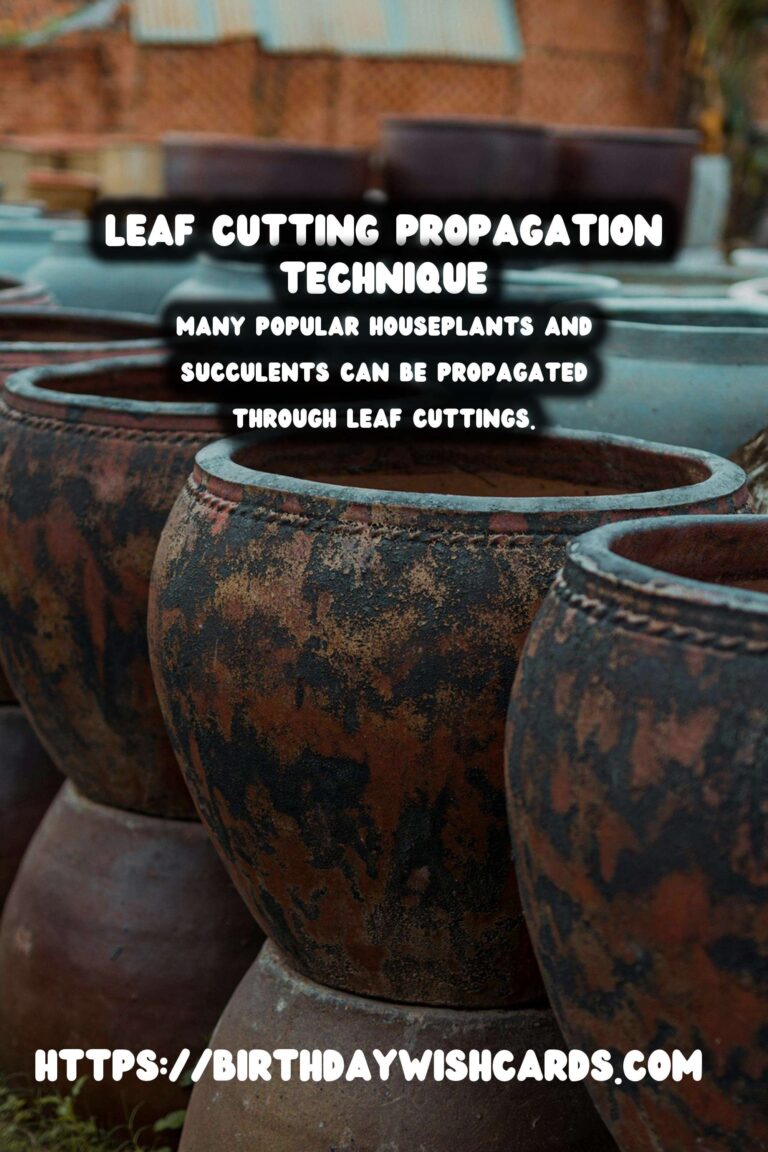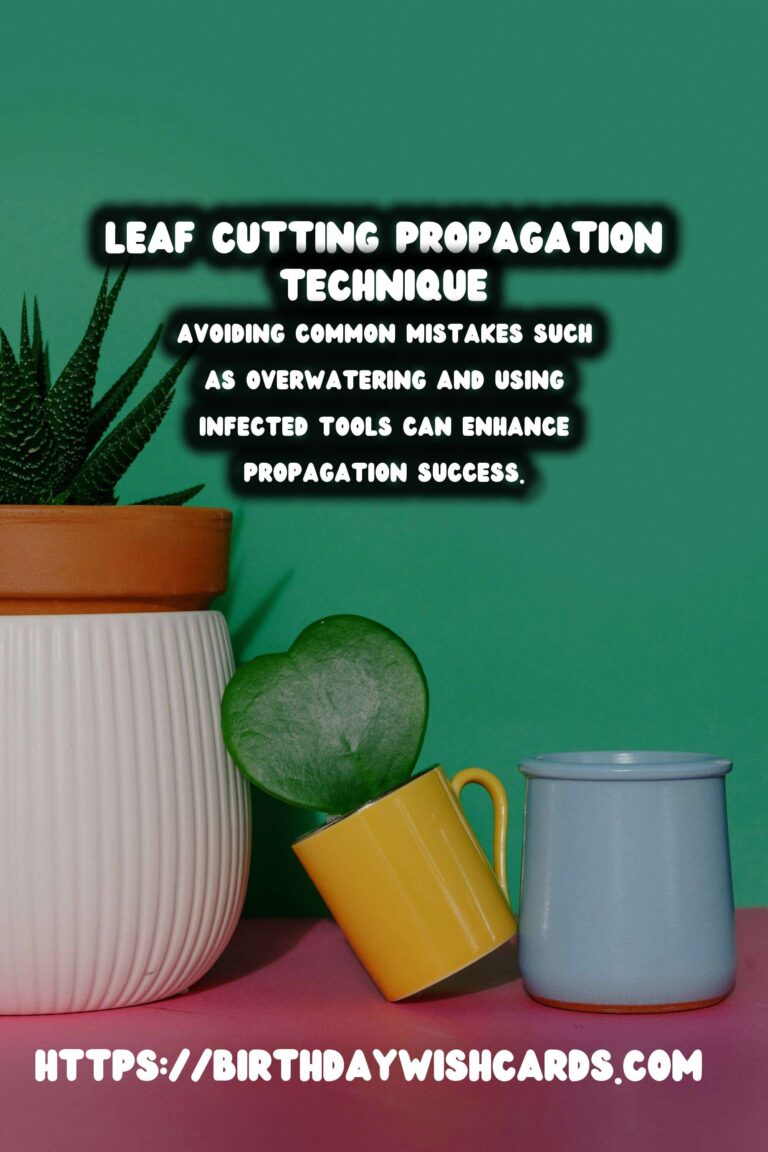
Plant propagation is a fascinating and rewarding aspect of gardening that allows you to grow new plants from various parts of an existing plant. One of the most intriguing and accessible methods of propagation is through leaf cuttings. This method not only allows gardeners to expand their plant collections but also helps in preserving and sharing plant varieties. In this article, we will delve into the process of leaf cuttings, exploring how it works, which plants are best suited for this method, and how to ensure successful propagation.
What is Leaf Cutting Propagation?
Leaf cutting propagation is a technique where a leaf or a section of a leaf is used to grow a new plant. Unlike other propagation methods that use stems or roots, leaf cuttings rely solely on the leaf’s ability to generate new roots and shoots. This method is particularly effective for plants that naturally produce adventitious roots and shoots, allowing them to regenerate from leaf tissue.
Benefits of Leaf Cuttings
One of the primary benefits of leaf cuttings is that it allows for the rapid multiplication of plants. Gardeners can produce multiple new plants from a single leaf, making it an efficient way to propagate. This method is also relatively easy and requires minimal equipment, making it accessible to both novice and experienced gardeners. Additionally, leaf cuttings can help preserve plant genetics, ensuring that the new plants are identical to the parent plant.
Which Plants Can be Propagated by Leaf Cuttings?
Not all plants can be propagated using leaf cuttings. However, many popular houseplants and succulents are well-suited for this method. Some of the most commonly propagated plants through leaf cuttings include:
- Begonias: Known for their beautiful foliage, begonias can easily regenerate from leaf cuttings.
- Jade Plant: This succulent is popular among gardeners and propagates readily from leaves.
- African Violets: A favorite among indoor plant enthusiasts, African violets can be propagated using leaf cuttings.
- Snake Plant: Also known as Sansevieria, this hardy plant can be propagated from leaf segments.
Steps for Successful Leaf Cutting Propagation
To successfully propagate plants using leaf cuttings, follow these steps:
1. Select a Healthy Leaf
Choose a mature and healthy leaf from the parent plant. Avoid leaves that are damaged or discolored.
2. Prepare the Cutting
Using a sharp, sterilized knife or scissors, cut the leaf at its base or into sections, depending on the plant type.
3. Let the Cutting Callus
Allow the cut end of the leaf to dry and form a callus. This can take several days and helps prevent rot when planting.
4. Plant the Cutting
Insert the callused end of the leaf into a potting mix suitable for the plant type. Ensure the cut end is firmly in the soil.
5. Provide Proper Care
Place the pot in a warm, well-lit area but out of direct sunlight. Water sparingly until new growth appears.
Common Mistakes to Avoid
While leaf cutting propagation is generally straightforward, there are some common mistakes to avoid for better success:
- Overwatering: Too much water can lead to rot. Keep the soil slightly moist but not soggy.
- Insufficient Light: Ensure the cutting receives adequate indirect light to encourage growth.
- Using Infected Tools: Always sterilize cutting tools to prevent the spread of disease.
Conclusion
Leaf cuttings offer an exciting and efficient way to propagate a variety of plants, allowing gardeners to expand their collections and share their favorite plants with others. By understanding the process and following the proper steps, gardeners can achieve successful plant propagation and enjoy the rewards of nurturing new life from a simple leaf.
Plant propagation through leaf cuttings allows gardeners to grow new plants from a part of an existing plant. Leaf cutting propagation is particularly effective for plants that naturally produce adventitious roots and shoots. Many popular houseplants and succulents can be propagated through leaf cuttings. Successful leaf cutting propagation involves selecting a healthy leaf, preparing the cutting, and providing proper care. Avoiding common mistakes such as overwatering and using infected tools can enhance propagation success. 









#PlantPropagation #LeafCuttings #Gardening #Houseplants #Succulents




